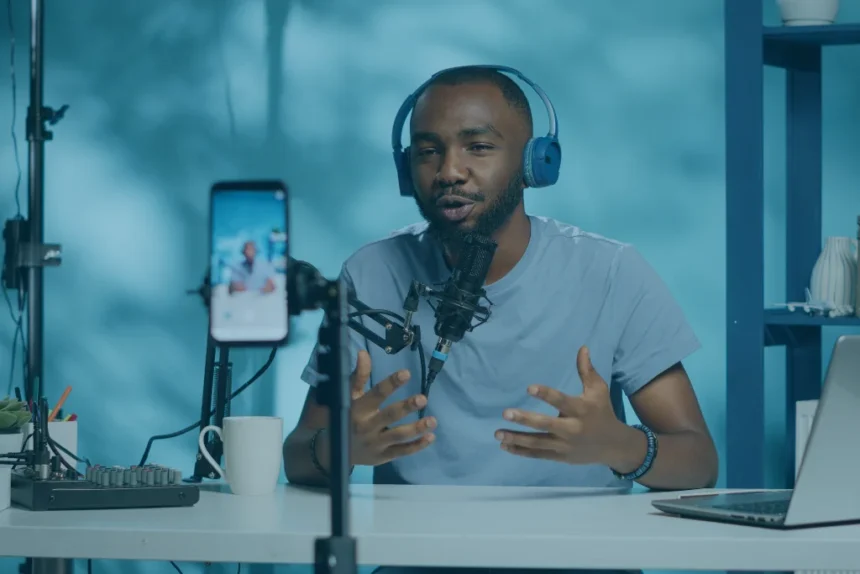User-generated content (UGC) has become the heartbeat of modern digital culture, reshaping industries and rewriting the rules of influence. From relatable Instagram posts to viral TikTok trends, UGC has turned ordinary individuals into creators of extraordinary impact. But as the lines between professional and amateur blur, so too does the notion of power. Has UGC truly democratised influence, or do the unseen forces of algorithms and corporate interests still hold the reins?
In a world dominated by user-generated creativity, it’s time to explore who really holds the power now.
The Rise of UGC
A decade ago, influence was largely the domain of celebrities, journalists, and traditional media outlets. These gatekeepers determined what stories were told and who got to tell them. Today, platforms like TikTok, Instagram, and YouTube have levelled the playing field, offering anyone with a smartphone the opportunity to create, share, and go viral.
This seismic shift has made content creation more accessible than ever. There’s no need for expensive equipment, formal training, or established connections. A clever idea, a well-timed moment, or a spark of authenticity can catapult an everyday individual into the spotlight. From a teenager reviewing skincare products in their bedroom to a commuter capturing a serendipitous interaction on a train, UGC has proven that influence is no longer reserved for the elite.
Consider the rise of TikTok trends like the “TikTok pasta” phenomenon, which revolutionised recipe-sharing, or Instagram’s #ShotOniPhone campaigns, where users’ creative photography became a cornerstone of Apple’s marketing. These examples demonstrate how UGC isn’t just a by-product of digital culture but a driving force shaping it.
Everyday Creators as New Influencers
At the heart of UGC’s appeal is relatability. Unlike polished celebrity endorsements, UGC creators resonate because they’re perceived as “one of us.” These creators, often dubbed micro or nano-influencers, cultivate trust by sharing their genuine experiences and perspectives. For brands, this authenticity is marketing gold, which is why partnering with a top-notch UGC content creation agency can be so beneficial.
A survey by Stackla found that 79% of people say UGC highly impacts their purchasing decisions, compared to just 13% who find branded content impactful. This shift in consumer trust has elevated everyday creators to positions of significant influence, even eclipsing traditional advertising in many sectors.
Take, for instance, the beauty industry. A single unboxing video from a micro-influencer can lead to sold-out products, proving that authenticity trumps reach. Similarly, travel enthusiasts documenting their adventures on Instagram have inspired global wanderlust, reshaping the travel industry’s approach to marketing.
But while these creators may appear to wield power, their visibility and success often hinge on the silent workings of algorithms.
The Role of Algorithms
Beneath the surface of UGC’s democratisation lies a critical question: How much influence do creators actually have when algorithms dictate what we see? Platforms like TikTok and Instagram use complex algorithms to prioritise certain types of content, often favouring what is most engaging, rather than what is most meaningful.
This dynamic means that creators are not entirely free agents. Their success depends on their ability to navigate platform-specific trends and appease algorithmic preferences. Those who fall out of favour—whether by failing to conform to the algorithm or by tackling less “clickable” subjects—can quickly lose visibility, regardless of their talent or effort.
As such, while UGC has decentralised influence, it hasn’t necessarily decentralised power. Platforms remain the ultimate gatekeepers, determining whose voices rise and whose fade into the digital ether.
Brands and the Commodification of UGC
While UGC has disrupted traditional advertising, it has also become a lucrative tool for brands seeking authenticity without the hefty price tag of professional campaigns. By leveraging UGC, companies can connect with audiences on a more personal level, positioning themselves as relatable and community-driven. However, this commodification raises important ethical questions.
One notable example is Coca-Cola’s “Share a Coke” campaign, where customers were encouraged to share personalised Coke bottles on social media. This clever strategy generated millions of pieces of UGC, blurring the lines between genuine consumer enthusiasm and free advertising. Similarly, fashion brands often encourage customers to post photos in their outfits, rewarding them with discounts or features on official social channels.
But for creators, the relationship is often one-sided. Despite driving engagement and sales, many UGC creators receive little to no compensation for their work. This dynamic has led to debates about exploitation, particularly when brands profit significantly from unpaid content.
Ownership is another contentious issue. In some cases, brands claim perpetual rights to use UGC submitted for campaigns, leaving creators with no control over how their content is used or monetised. While platforms have democratised creation, the power dynamic between brands and creators often feels anything but equal.
The Responsibility of UGC Creators
As UGC creators gain influence, they also inherit a certain level of responsibility. Their audiences trust them to provide honest recommendations, meaningful content, and a sense of authenticity that separates them from traditional advertising. However, this trust comes with challenges.
The rise of undisclosed partnerships is one such issue. As brands increasingly collaborate with UGC creators, transparency becomes essential. The UK’s Advertising Standards Authority (ASA) mandates that influencers clearly label sponsored posts, but enforcement is patchy, and the lines between personal content and paid promotion remain blurred.
Creators also face pressures to constantly produce content, maintain audience engagement, and navigate the ever-changing algorithms of their chosen platforms. The result? Burnout and a struggle to balance authenticity with the demands of being a public figure.
The Future of Influence: Who Holds the Power?
As UGC continues to evolve, the question of power remains central. Creators may dominate the narrative today, but their reliance on platforms means true autonomy is elusive. Algorithms dictate visibility, and brands often hold the upper hand in collaborations.
Emerging technologies, such as AI, could further disrupt the landscape. AI-generated content is already challenging the authenticity that makes UGC so compelling. Could we reach a point where audiences question whether a piece of content is human-made or algorithmically produced?
Despite these challenges, UGC is here to stay. Its grassroots nature has reshaped industries, democratised creativity, and given audiences a stronger voice in shaping culture. However, the future of influence may depend on creators and audiences demanding greater transparency, fairer compensation, and more control over the platforms that amplify their work.
Shaping the Future of Influence
UGC has undeniably changed the rules of influence, shifting power from traditional gatekeepers to everyday creators. Just look at the UGC statistics and it’s plain to see. Yet, the landscape is far from fully democratised. Algorithms, brands, and platforms continue to wield significant influence over who gets seen and heard.
As we look to the future, the true power may lie not with creators, brands, or platforms, but with the audiences who engage with and amplify their voices. By questioning, supporting, and valuing authenticity, we can help shape a more equitable and creative digital ecosystem.


